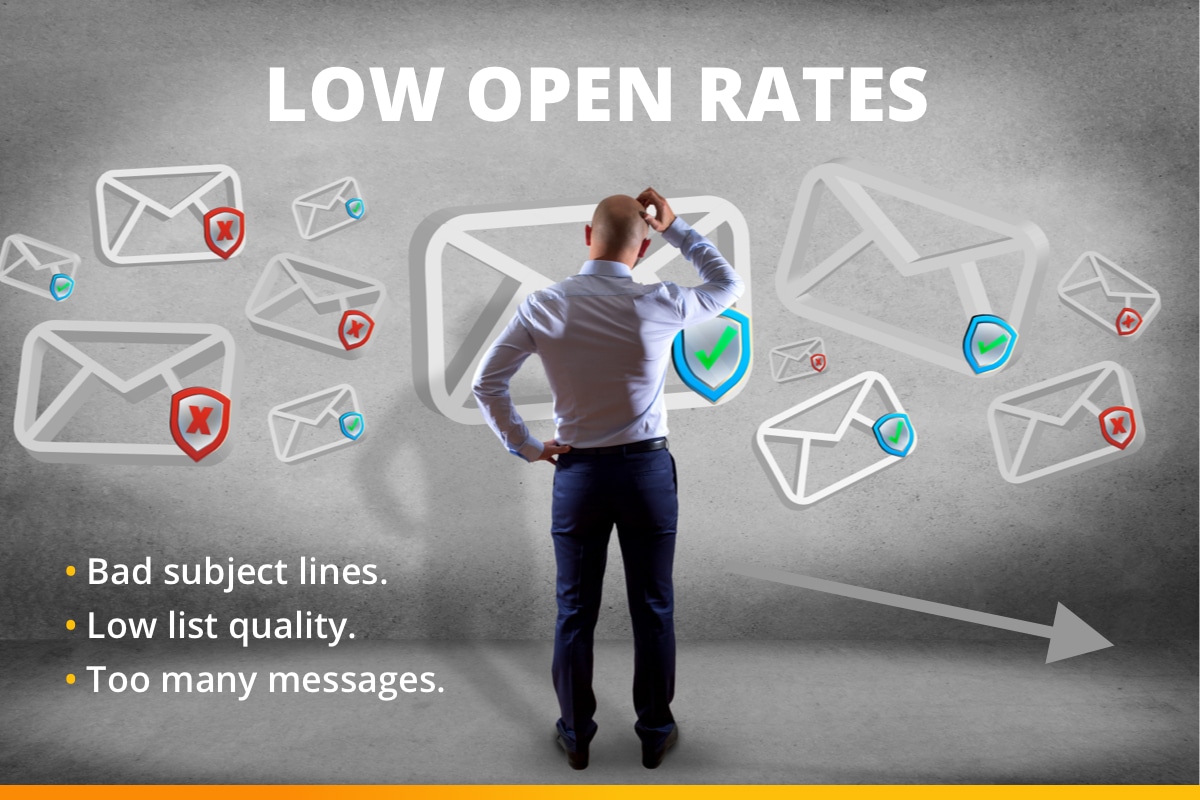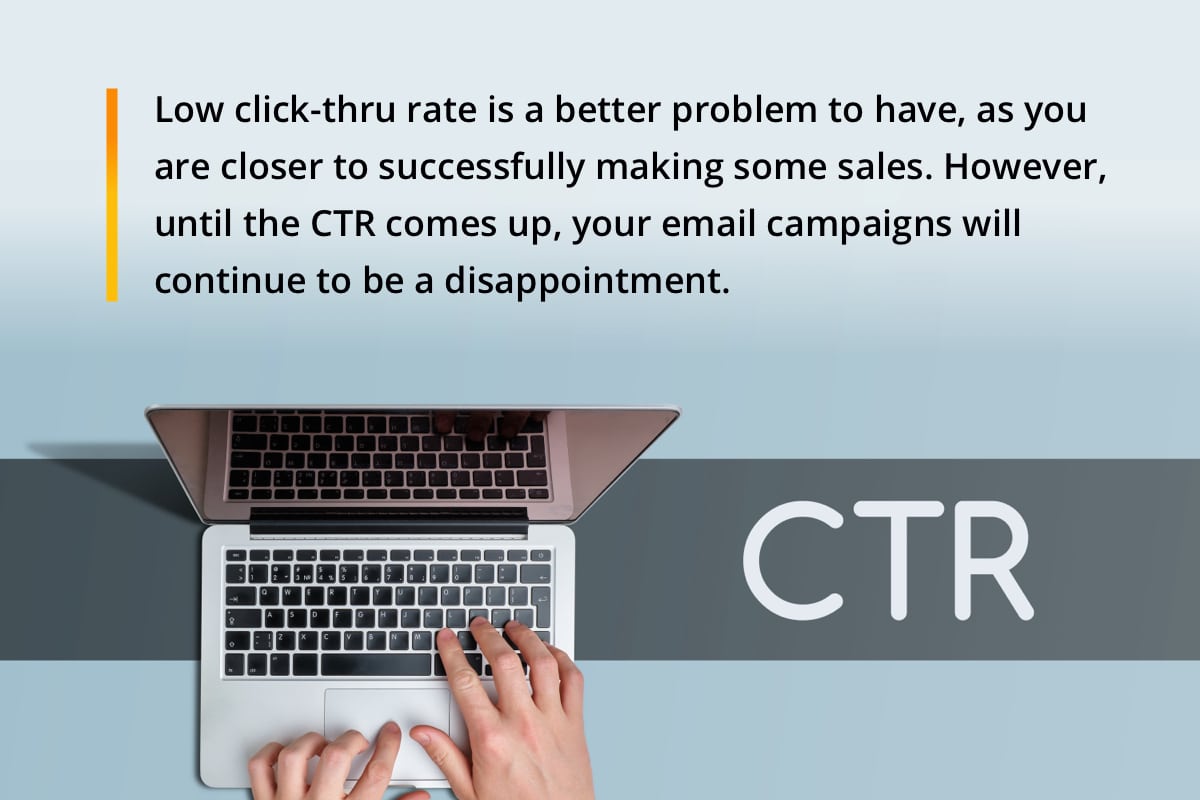
There’s incredible opportunity in cold email, but it’s a challenge nonetheless. It’s never easy to close sales when sending out messages to strangers cold. Will they welcome your email message? Will they get annoyed and immediately delete it? To get the best possible results, you’ll need to commit yourself to consistently improving your campaign through tracking metrics and making changes based on those numbers.
We’d like to help you understand what metrics to report on and how to adjust your campaigns to improve results in those areas. You could spend endless hours diving into this subject, but we are going to try to keep things simple, so you can get started right away on the task of producing better cold emails. Let’s get started!
Two Critical Metrics to Track
The first thing you need to establish is what metrics you are going to use to evaluate campaign performance. There are plenty of metrics you can track, and the email software that you use should offer its own reporting, but we recommend getting started with the two most important metrics: open rate and click-through rate (CTR). These are easy metrics to understand and they will tell you a lot about campaign performance and what changes you need to make to see improvement.
Quickly, let’s explain what these two metrics mean:
- Open rate. This is the percentage of your emails that are opened by the recipient. The math here is very simple. Imagine that you sent out 1,000 emails and 100 of those messages were opened after they landed in the recipient’s inbox. Dividing the 100 opened messages by the 1,000 sent messages would leave you with an open rate of 10%. You’ll certainly want to get your open rate higher than this example, if at all possible, but you get the point. Obviously, the goal is to get the open rate as high as you can push it, so plenty of time and effort is going to be put into getting as many people as possible to open your messages.
- CTR. With click-through rate, we are talking about the percentage of messages that result in the recipient clicking on something in the message to head to your desired destination. Usually, this will be a landing page on your site. The math here is just as easy as above. This time, we’ll use the number of clicks that resulted after the emails were sent out, and we’ll again divide by the total number of messages. So, if we got 10 clicks from our 1,000 total emails, that’s a CTR of 1%. As you might expect, CTR is always going to run lower (usually much lower) than open rate, since the message has to be opened before a click can occur.
It’s difficult to nail down solid benchmarks for what represents a good performance in these two categories, but we can offer some general guidelines. For open rate, something around 20% is going to be a pretty solid performance for your campaigns. That will vary somewhat by industry, but you can keep an eye on that number for a starting point. For CTR, you’d like to see at least 2%, but you might be able to move that up to around 5% or so with a particularly effective strategy.
Causes of Low Open Rates

If you find that your open rates are particularly low compared to the “average” cold email campaign, you’ll obviously need to address that issue in search of better results. But before you can make improvements, you need to fully understand why your open rates are low in the first place. That’s going to require you to do some critical thinking about the emails you are sending and the list you’ve built, but some common causes of poor open rates are as follows:
- Bad subject lines. This is likely the leading issue when you aren’t getting your emails opened very often. The subject line is the only part of the message that the recipient is going to see, other than who the message is from, when it is lined up in their inbox. So, you only have this short space to grab their attention and earn a click. Writing quality subject lines is as much an art as it is a science, so plenty of practice is required to master it. Generally speaking, you’ll want to keep subject lines short and avoid anything that sounds “spammy”. Be straightforward, highlight what the message is about, and tease something that makes it worth their while to open the message and learn more.
- Low list quality. Sometimes, it’s simply the quality of your email list that is to blame. Depending on how you collected the email addresses that you are using, you might be sending out messages to an audience that is very unlikely to be interested anyway. It can be helpful to consistently review the quality of your list and delete any email addresses that haven’t opened one of your messages in a while.
- Too many messages. People are going to get tired of your messages if you send them too regularly. Soon enough, they’ll just start to ignore them when they come in, deleting the message without even stopping to consider what it’s about. You need to remember that people are busy, and they won’t want to consistently be on the receiving end of your promotions. In this case, less is often more.
Causes of Low Click-Through Rates
Just as we did with open rates above, we are now going to dive into some of the causes of poor click-through rates. If people are opening your messages at a decent rate but not taking action once they are inside the message, you are facing a different problem than when they simply don’t open the email.
In many ways, this is a better problem to have, as you are closer to successfully making some sales. However, until the CTR comes up, your email campaigns will continue to be a disappointment. You might find that one or more of the points listed below is to blame.
- An unclear direction. Sometimes, readers of your messages will be willing to click on a link to learn more or even make a purchase, but your email might not make it clear how they should do so. This is a big mistake and one that you’ll want to correct right away. Make it painfully obvious what you want readers to do, and use large, bright buttons for your links. Even if you don’t love the way the design of your message looks with these bold CTAs, it’s better to be bold than to be ambiguous.
- Slow images at the top. If you put a big, heavy image near the top of your email, it may take forever to load – and the potential customer may give up and just delete the message instead. You don’t have much time to grab their attention, so keep images small to make sure they can load in a hurry on any type of device.
- Lousy writing. You need to put in the time and effort required to produce effective email copy. The messages you send out should be consistent with the rest of your branding and should build trust with the audience. Take some time to create quality messages and consider hiring a professional copywriter if no one in-house is able to get the job done successfully.
Making Incremental Improvements

It would be great if you could magically make one or two improvements and suddenly be left with an email campaign that was wildly successful. Those aren’t the kinds of results that you should expect, however. More often than not, improvements in email campaigns come gradually, with modest improvements slowly adding up over time until you are left with a campaign that is turning a profit.
Unfortunately, many people get discouraged before they finally reach that promised land of profitability. This can largely be blamed on unrealistic expectations. Focus your efforts on slow and steady gains and be consistent with your efforts over time.
Based on the points we made in the previous sections about problems with low open rates and low CTRs, you can probably already guess what we are going to suggest for some of the incremental improvements you can make. Even if you have some idea about what will follow, we are still going to spell out the ideas out below –
- Test out new subject lines. Write as many different subject lines as you can think of and start to test some of them out in your upcoming messages. There is really no way to know how a subject line is going to perform until you put it out “into the wild”, so just mix in new ones with old ones to test how they work (more on testing below).
- Give each message a purpose. You should never send out an email unless you know exactly what it is you want the recipient to do after getting that message. After all, if you don’t know what they should do, there is no chance that they’ll be able to take action confidently. Have a clear vision and then make that vision obvious to the readers.
- Spend time on design. Things like shrinking the file size of your images and designing good CTAs are important when hoping to boost click-through rate. Whether it’s a member of your team that optimizes the design or it’s a freelancer you hire to do the job, investing in your email design should pay off in the long run.
The Value of Segmenting

Before we wrap this up, it’s important to offer a word on segmenting and how it can be used to evaluate the changes you make. Generally speaking, you don’t want to make wholesale changes to your marketing messages without first testing them on a smaller segment of your list. So, you might break off a representative sample that is only 10% of your list and send those people the updated messages with your changes made. Then, you can track the results within your test segment before applying the same techniques to the list as a whole.
This is the best way to isolate tests and determine what is working and what isn’t. If you skip the segmentation process, you’ll forever be guessing at your results, and you won’t really know what changes are correlated to any improvements that are seen. Be strategic about your testing and it will be easier to make smart decisions later on.
The only thing left to do now is to dive into your existing cold email campaigns to review results and make improvements. This process is never over, but you will hopefully inch closer and closer to your goals with these campaigns as you continue to make some of the changes we have discussed above. Good luck!
Most Popular Articles

Seeing Favicons in Your Google Search Results? Here’s Why…
Have you noticed anything different in your Google Search results lately? Google added tiny favicon icons to its organic search results in January. It was…

Business Growth and Digital Marketing News & Tips 11-17-24
Are you encouraging and rewarding innovation? Lee Cockerell is the former Executive Vice President of Operations at Walt Disney World. A lover of traditional red…

Business Growth and Digital Marketing News & Tips 11-27-24
A culture of gratitude "Feeling gratitude and not expressing it is like wrapping a present and not giving it." – William Arthur Ward Beyond being…








